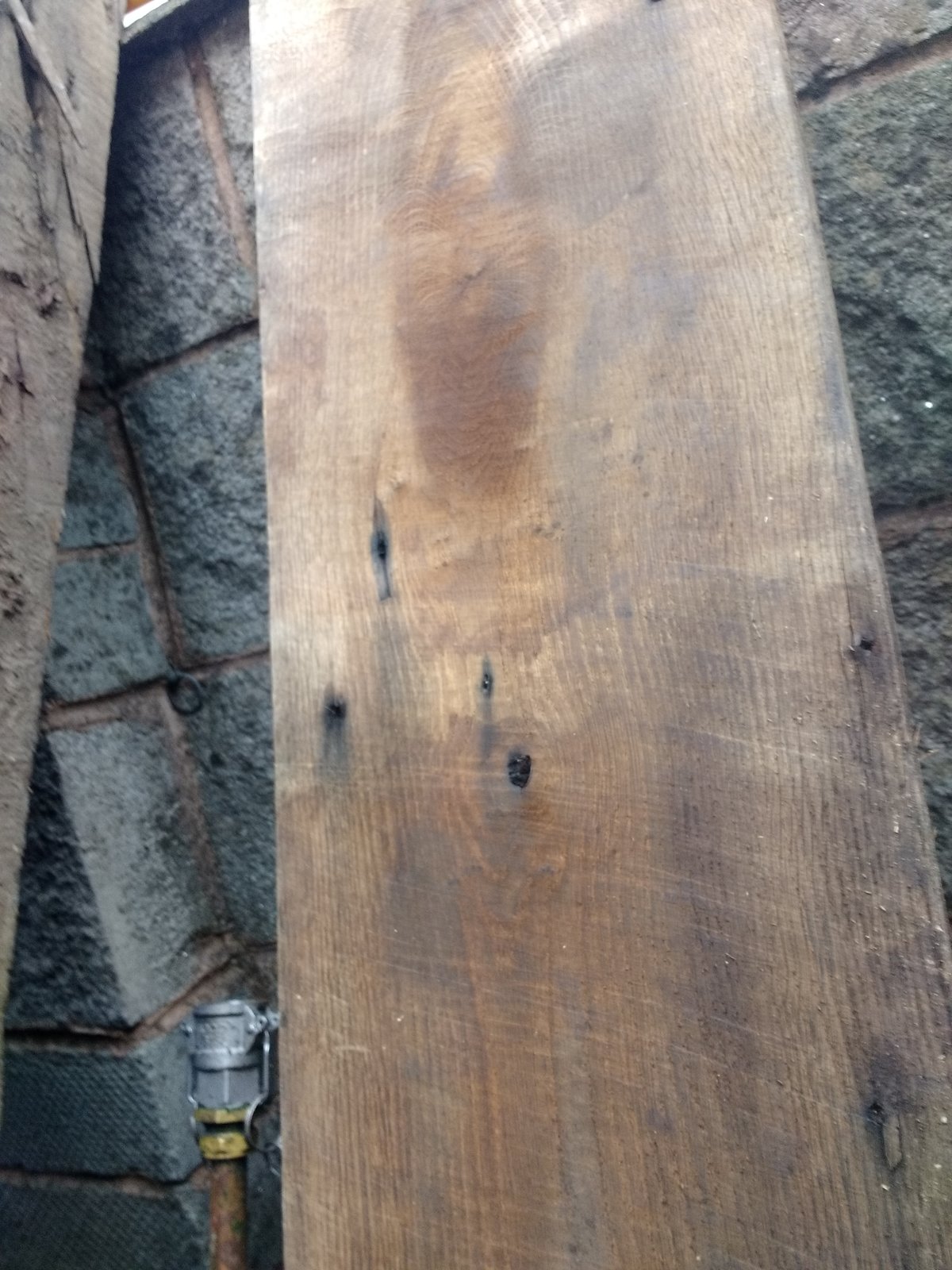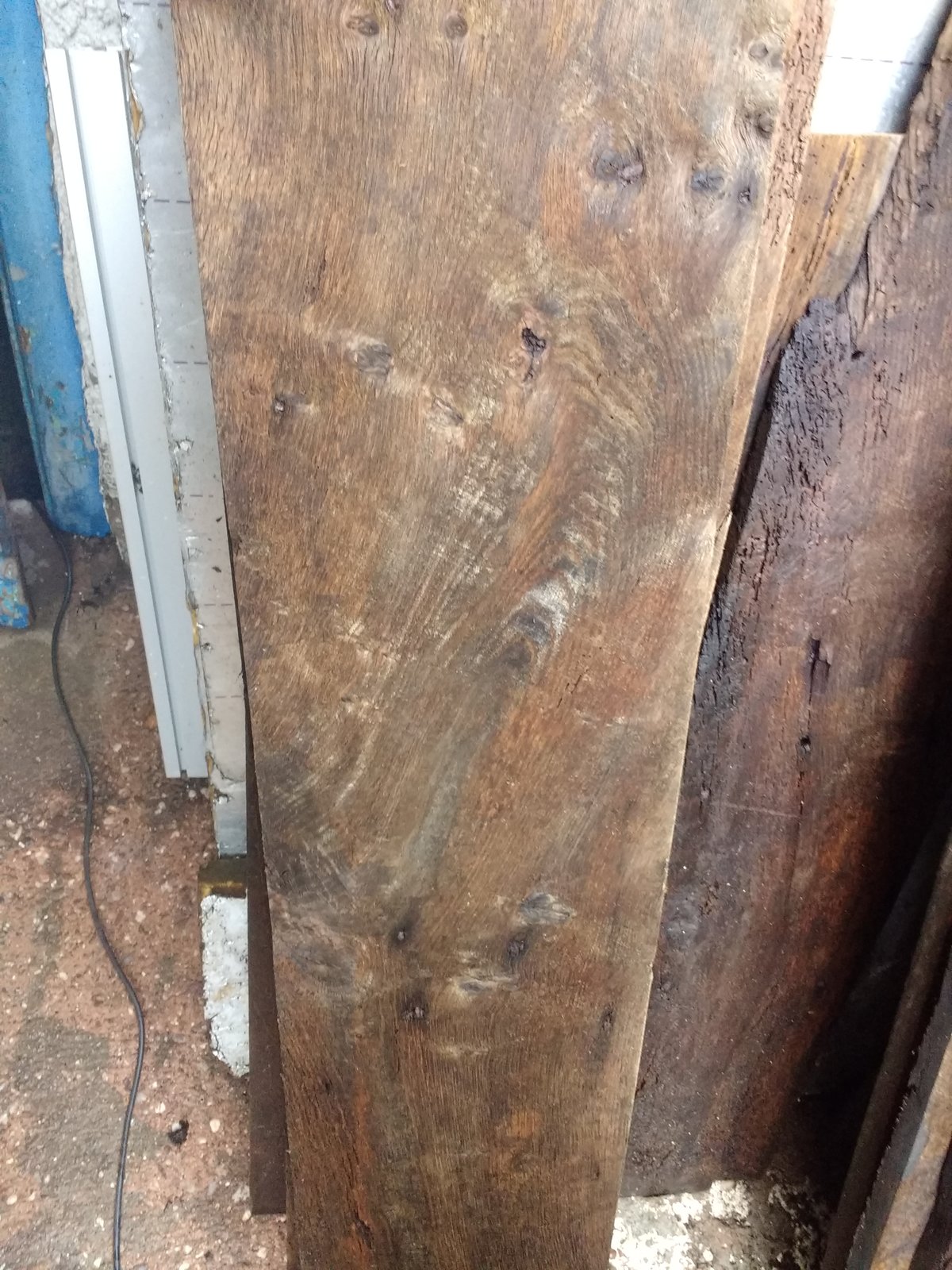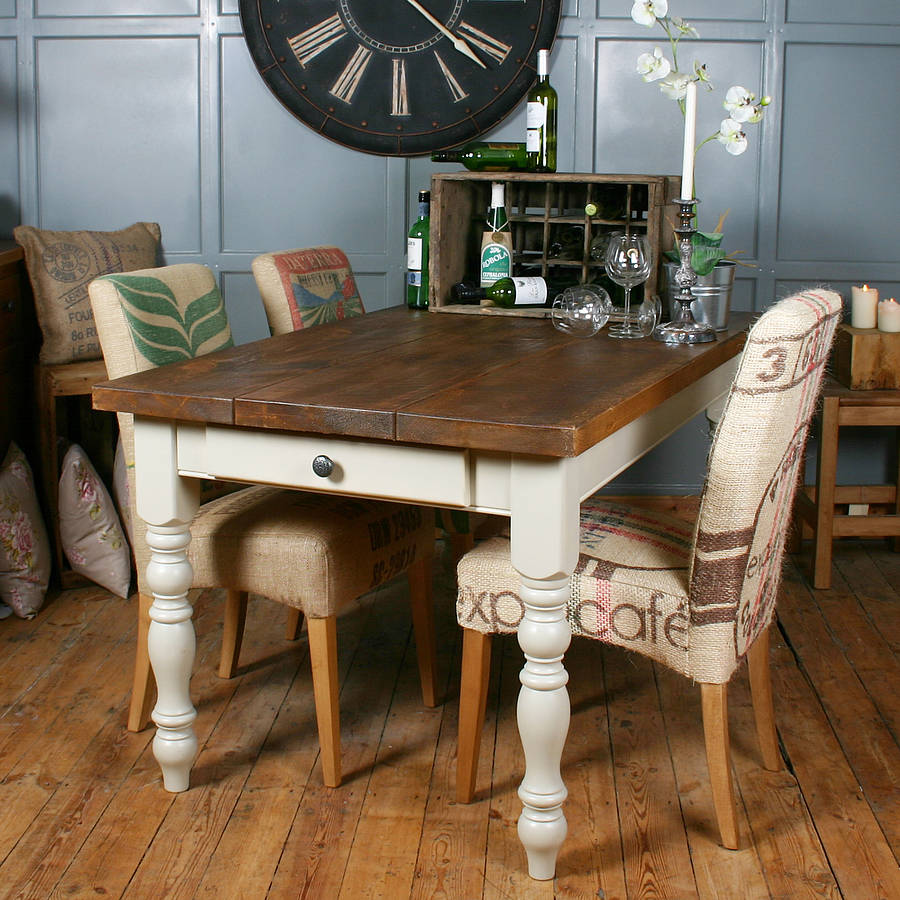My partner would like me to make a kitchen table, farm house style, from the boards that people kindly ID'd for me the other day.
But theyre pretty thin... Much thinner than the stock that i see other people using for "farmhouse" style tables.
To recap, these are the boards (well, not actually them, as theyre short ones, but i have some longer) -



etc. Again these are not the actual parts, but theyre the ones i took photos of. I have some 7 foot (aprox) lengths also.
I just measured three, and they were 20, 21, and 22mm.
Im not planning on planing these, so i wont loose much stock. They are too naily for the planer, and i dont want them too fresh anyhow.
(the house that they were out of was built in approximately 1850, so theyre a few years old)
But is 20mm a bit on the thin side for this sort of build?
This is likley the sort of design ill end up with -

I actually prefer this styling -

however, i have no way of turning the legs, and i do have the joists that the boards in my photos were sitting on, which are more applicable to the above design.
For background, i have minimal skill with woodworking. Im a metal worker (precision stuff) so have background in 3d stuff, but limited experience with wood! (i have a wadkin table saw, and a axminster planer/thickenesser though). Ive made cabinet doors and stuff like that before, but no tables, so any additional advice would be welcomed!
Thank you!
But theyre pretty thin... Much thinner than the stock that i see other people using for "farmhouse" style tables.
To recap, these are the boards (well, not actually them, as theyre short ones, but i have some longer) -
etc. Again these are not the actual parts, but theyre the ones i took photos of. I have some 7 foot (aprox) lengths also.
I just measured three, and they were 20, 21, and 22mm.
Im not planning on planing these, so i wont loose much stock. They are too naily for the planer, and i dont want them too fresh anyhow.
(the house that they were out of was built in approximately 1850, so theyre a few years old)
But is 20mm a bit on the thin side for this sort of build?
This is likley the sort of design ill end up with -

I actually prefer this styling -

however, i have no way of turning the legs, and i do have the joists that the boards in my photos were sitting on, which are more applicable to the above design.
For background, i have minimal skill with woodworking. Im a metal worker (precision stuff) so have background in 3d stuff, but limited experience with wood! (i have a wadkin table saw, and a axminster planer/thickenesser though). Ive made cabinet doors and stuff like that before, but no tables, so any additional advice would be welcomed!
Thank you!



















































